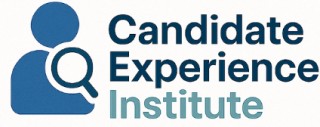
The Core Components of DEIJB
Key Elements of DEIJB
Understanding the core components of Diversity, Equity, Inclusion, Justice, and Belonging (DEIJB) is essential for fostering an inclusive environment. This framework is not just an integration of buzzwords; it’s a comprehensive approach that ensures all individuals feel a sense of belonging and are valued in the workplace. Here are some foundational elements of DEIJB:- Diversity: Diversity encompasses the acceptance and respect of all differences, including but not limited to, race, gender, age, ethnic group, or sexual orientation. It is the presence of varied perspectives within the staff, faculty, and student populations that marks a vibrant workplace or school environment.
- Equity: Equity involves the fair treatment and allocation of resources and opportunities, allowing every individual to thrive. It is crucial to implement anti-biased policies that ensure equal access, acknowledging the need to rectify historic imbalances and misinformation.
- Inclusion: Inclusion guarantees that diverse individuals feel welcomed and are able to participate fully. This requires active, intentional, and ongoing efforts to objectify an inclusive environment through training and anti-racist initiatives that nurture an inclusive community.
- Justice: Justice adds another layer by emphasizing the removal of systemic barriers. Creating inclusive structures and anti-discriminatory practices helps achieve justice for individuals so they can work without prejudice.
- Belonging: Belonging focuses on forming environments where every voice matters and individuals feel they are part of the community. By fostering employee engagement and crafting a workplace people feel they truly belong to, organizations can cultivate a sense of connection.
Why DEIJB Matters in Candidate Experience
The Transformative Importance of DEIJB in Candidate Interactions
Incorporating DEIJB (Diversity, Equity, Inclusion, Justice, and Belonging) into candidate experience is more than just an amenity; it’s an imperative. A candidate's interaction with a company does not merely rest on their skills' alignment with job requirements but also resonates with whether they feel like a good fit within the company's culture. A workplace that actively engages in creating inclusive environments strengthens its appeal to top talent. Candidates today are increasingly mindful of a company's anti-bias policies, inclusion methods, and diversity equity initiatives. Those with a strong commitment to diversity, equity, inclusion, justice, and belonging principles not only attract a wider pool of applicants but also set an example of inclusive leadership. Organizations that fail to incorporate DEIJB risk missing out on potential talent who seek an environment where they can genuinely feel they belong. Implementing DEIJB within a company's recruiting process offers profound benefits. A diverse and inclusive environment signals more than just acceptance. It shows a corporate commitment to nurturing an anti-racist, anti-biased workplace that can appeal across cultures, genders, and ideologies. When candidates perceive a sustained commitment to these values, they feel valued and included, which is critical for both recruitment and retention. Moreover, fostering a diversity inclusion mindset is essential not just for prospective employees but for current faculty and staff. Companies must ensure their internal policies and practices reflect an equitable approach, reinforcing the notion of belonging for everyone. This can be cemented through necessary diversity inclusion training, creating a consistent sense of belonging among all employees. To further understand how companies can enhance their candidate experience through DEIJB-focused practices, a comprehensive exploration of implementing training modules can provide practical insights. For a deeper dive into this crucial aspect, consider exploring the available resources on enhancing candidate experience through DEIA training. This shift towards a pervasive, inclusive ethos not only elevates candidate experiences but ultimately contributes to a more equitable and just corporate landscape.Implementing DEIJB in Recruitment Strategies
Strategic Actions for Embedding DEIJB
Implementing DEIJB in recruitment strategies requires a holistic approach, where every step of the process is imbued with a strong sense of commitment to diversity, equity, inclusion, justice, and belonging (DEIJB). The aim is to create an anti-biased, inclusive environment where candidates feel they truly belong. To achieve this, organizations must consider several aspects:- Review Current Policies: It is essential for organizations to begin by examining existing policies and practices. These should be evaluated through an anti-racist lens to ensure that they do promote an environment where diversity and inclusion thrive.
- Training and Development: Employees should receive continuous training on inclusive leadership and equity inclusion. This not only includes corporate faculty staff but should also extend to students, as future workforce members, to shape a more inclusive workplace.
- An Inclusive Hiring Process: Every touchpoint in the hiring process must reflect this unwavering commitment to creating inclusive experiences. Strategies must be developed that consider how policies practices impact both the short and long-term candidate experience.
- Creating Opportunities for Feedback: Collecting feedback is a vital component of effective DEIJB practices. Evaluating feedback allows organizations to identify potential biases and to adapt strategies that will foster a better experience for all candidates. For ideas on collecting and enhancing feedback, explore enhancing campaigns through effective feedback collection.
Challenges in Achieving DEIJB
Barriers to Embracing DEIJB in Recruitment
Achieving the overarching goals of diversity, equity, inclusion, justice, and belonging (DEIJB) within recruitment strategies is fraught with challenges. While many organizations express an unwavering commitment to creating inclusive environments, the complexities of implementing DEIJB policies and practices often reveal underlying obstacles. One of the main barriers is the resistance to change within established corporate structures. Traditional workplace environments may cling to long-standing methods that inadvertently sustain discrimination or bias, despite a growing need for anti-biased and inclusive practices. The enduring perception that DEIJB initiatives are merely optional can lead to tokenism rather than a genuine sense of belonging for candidates. Furthermore, despite good intentions, the lack of comprehensive training for hiring staff can result in anti-racist and inclusive policies not being consistently enforced. This misalignment between policies and day-to-day practices can diminish the effectiveness of DEIJB measures, leading to candidates not feeling they truly belong. Achieving diversity inclusion also requires a cultural shift within organizations, which often faces resistance. This shift involves not just policy changes but a commitment diversity to fostering an inclusive environment for all. However, many organizations are still grappling with how to integrate these principles deeply into their work culture. Educational institutions, particularly those that pride themselves on diversity equity, face their own unique challenges. Balancing equity inclusion for both students and faculty staff in recruitment initiatives calls for careful planning and execution. They must ensure an equitable environment that’s not only anti-discriminatory but also promotes justice belonging across all levels. Moreover, measuring the success of DEIJB initiatives can be difficult. Metrics need to go beyond surface-level indicators like diversity quotas to assess the genuine impact on candidate experiences and employee engagement. Organizations must invest in ongoing evaluations to ensure DEIJB goals are met and adjust their strategies as required.Measuring the Success of DEIJB Initiatives
Evaluating DEIJB Initiatives
Measuring the success of DEIJB initiatives in candidate experience requires a comprehensive approach. It involves assessing how well diversity, equity, inclusion, justice, and belonging are integrated into recruitment processes and how they impact the overall candidate journey. Here are some key areas to consider:
- Feedback Mechanisms: Implementing surveys and feedback tools can help gauge how candidates perceive the inclusivity of the recruitment process. This feedback can highlight areas where candidates feel a sense of belonging or identify gaps in the current system.
- Recruitment Metrics: Analyze recruitment data to assess diversity in candidate pools and hiring outcomes. Metrics such as the diversity of applicants, interviewees, and hires can provide insights into how well DEIJB principles are being applied.
- Employee Engagement: Post-hire surveys can reveal how new hires perceive the workplace environment. This helps in understanding if the inclusive policies and practices discussed during recruitment translate into actual experiences.
- Training and Development: Evaluate the effectiveness of anti-bias and inclusive leadership training for recruitment teams. This ensures that staff are equipped to create an inclusive environment for all candidates.
- Policy Reviews: Regularly review corporate policies to ensure they align with DEIJB goals. This includes examining anti-racist and anti-biased practices to foster a more equitable and inclusive workplace.
Continuous Improvement
Achieving a truly inclusive candidate experience is an ongoing process. Organizations must demonstrate an unwavering commitment to diversity and inclusion by continuously refining their strategies. This involves staying informed about future trends in DEIJB and adapting to new challenges as they arise. By fostering an inclusive environment, companies not only enhance their recruitment processes but also contribute to a more equitable and just society.













